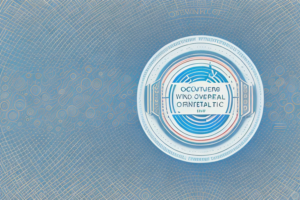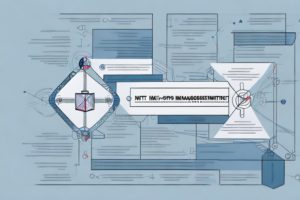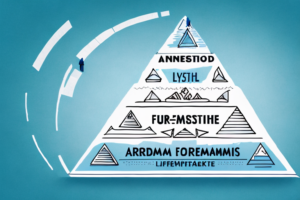What is access control implementation plan in RMF?

A computer system with layered security controls
In today’s digital age, information security has become increasingly important, as most organizations rely heavily on digital data for their day-to-day operations. With an ever-increasing number of cyber threats, the need to implement robust security measures has never been greater. In this regard, the Risk Management Framework (RMF) has become an essential tool for many organizations to manage and mitigate risks associated with their information systems.
Understanding the basics of RMF and access control
The RMF provides guidelines for system security and risk management, and it includes six distinct steps: categorization, selection, implementation, assessment, authorization, and monitoring. One of the most critical components of any RMF process is access control.
To put it simply, access control is the process of ensuring that authorized individuals have the right level of access to secured resources, while unauthorized individuals are restricted from accessing those resources.
Access control can be implemented in various ways, such as through the use of passwords, biometric authentication, or smart cards. It is important to choose the appropriate access control method based on the level of security required and the resources being protected.
Effective access control also involves regularly reviewing and updating access permissions to ensure that they remain appropriate and up-to-date. This can help prevent unauthorized access and reduce the risk of security breaches.
The importance of effective access control in RMF
The importance of effective access control in RMF cannot be overstated. Access control serves as a crucial defense mechanism against many types of cyber attacks. When implemented correctly, access control can help prevent unauthorized access, data breaches, and other security incidents that can have significant financial, legal, and reputational consequences for organizations.
One of the key components of effective access control is the principle of least privilege. This means that users are only given access to the resources and information that they need to perform their job functions. By limiting access in this way, organizations can reduce the risk of accidental or intentional data breaches caused by employees with excessive privileges.
Another important aspect of access control is the use of multi-factor authentication. This involves requiring users to provide two or more forms of identification before they are granted access to a system or application. This can include something the user knows (such as a password), something they have (such as a smart card), or something they are (such as a fingerprint). By requiring multiple forms of identification, organizations can significantly increase the security of their systems and reduce the risk of unauthorized access.
Key components of an access control implementation plan in RMF
An access control implementation plan in RMF should cover several critical components. These include developing an access control policy, determining access requirements, selecting and implementing appropriate access control mechanisms, and training employees on proper access control practices.
Another important component of an access control implementation plan in RMF is conducting regular audits and assessments to ensure that the access control mechanisms are functioning as intended and that there are no vulnerabilities or weaknesses in the system. This can involve reviewing access logs, conducting penetration testing, and performing risk assessments.
It is also crucial to have a contingency plan in place in case of a security breach or other unexpected event. This plan should outline the steps to be taken in the event of a breach, including notifying appropriate personnel, containing the breach, and conducting a post-incident review to identify areas for improvement.
How to develop an access control implementation plan in RMF
The first step in developing an access control implementation plan in RMF is to assess the current security posture of the organization. This includes identifying information systems that require access control, determining user roles and responsibilities, and evaluating existing access control mechanisms.
After assessing the security posture of the organization, the next step is to develop an access control policy. The policy should define the roles and responsibilities of users, describe the types of resources that require access control, and outline the procedures for granting and revoking access rights.
Once the policy is in place, the next step is to determine access requirements for each information system. This involves identifying the types of users that require access and the level of access required for each user role. The access requirements should be documented in an access control matrix, which serves as a reference for determining access privileges.
After determining access requirements, the next step is to select and implement appropriate access control mechanisms. Access control mechanisms can include a variety of technologies, including access control lists, authentication mechanisms, and encryption.
The final step in developing an access control implementation plan in RMF is to train employees on proper access control practices. Employees should be trained on how to properly use access control mechanisms and how to recognize and respond to potential security incidents.
It is important to regularly review and update the access control implementation plan to ensure that it remains effective and relevant. This can involve conducting periodic risk assessments, evaluating the effectiveness of existing access control mechanisms, and making necessary adjustments to the access control policy and procedures.
Another important aspect of developing an access control implementation plan is to ensure that it complies with relevant laws, regulations, and industry standards. This can include compliance with data protection regulations, such as GDPR or HIPAA, or adherence to security frameworks, such as NIST or ISO 27001.
Common challenges faced during access control implementation in RMF
Despite the benefits of access control, implementing it can be challenging for many organizations. Common challenges include lack of resources, conflicting or unclear access requirements, and difficulty selecting and implementing appropriate access control mechanisms.
Another challenge faced during access control implementation is the lack of understanding of the organization’s data and system architecture. Without a clear understanding of the organization’s data and system architecture, it can be difficult to determine the appropriate access control mechanisms to implement. This can lead to ineffective access control and potential security breaches.
In addition, another challenge is the difficulty in maintaining access control over time. As the organization’s data and system architecture evolves, access control mechanisms may need to be updated or changed. This can be a time-consuming and resource-intensive process, and if not done properly, can lead to security vulnerabilities.
Best practices for successful implementation of access control in RMF
To overcome these challenges, organizations can follow several best practices for successful implementation of access control in RMF. These include establishing a clear and concise access control policy, conducting regular security assessments, involving key stakeholders in access control decisions, and providing ongoing employee training.
Another important best practice for successful implementation of access control in RMF is to regularly review and update access control policies and procedures. As technology and security threats evolve, access control measures must also adapt to ensure continued protection of sensitive information. Additionally, organizations should consider implementing multi-factor authentication and role-based access control to further enhance security measures.
Evaluating the effectiveness of your access control implementation plan in RMF
After the implementation of an access control implementation plan in RMF, it’s essential to evaluate its effectiveness continually. This involves regularly reviewing access logs and other relevant security data to identify potential issues and anomalies. Organizations should also conduct periodic security assessments to verify that the access control mechanisms are working correctly.
It’s important to note that evaluating the effectiveness of an access control implementation plan is not a one-time task. As technology and security threats evolve, access control mechanisms must also adapt to ensure continued protection of sensitive information. Therefore, organizations should establish a process for ongoing evaluation and improvement of their access control implementation plan to stay ahead of potential security risks.
Key factors to consider when choosing an access control solution for RMF
When choosing an access control solution for RMF, several key factors should be considered. These include the type of information system being secured, the level of security required, the complexity of the access control mechanisms involved, and the compatibility of the solution with existing security infrastructure.
Case studies: Successful examples of access control implementation in RMF
Several organizations have successful examples of access control implementation in RMF. One such example is the Department of Defense, which has implemented an access control system that meets strict security requirements while still providing the necessary level of access needed for efficient operation. Another example is the National Institute of Standards and Technology, which has developed a comprehensive access control framework that can be used by organizations of all sizes.
Future trends and developments in access control for RMF
As technology continues to evolve, access control solutions will need to adapt and evolve as well. In the future, we can expect to see the continued development of biometric authentication mechanisms, increased use of machine learning and artificial intelligence for identifying potential security incidents, and greater emphasis on the use of encryption as a primary access control mechanism.
Final thoughts: The importance of ongoing monitoring and maintenance of your access control implementation plan in RMF
Ultimately, the success of any access control implementation plan in RMF depends on ongoing monitoring and maintenance. Organizations must remain vigilant in their efforts to identify and respond to potential security incidents, update access control mechanisms as needed, and provide ongoing employee training to ensure that everyone is aware of and follows proper access control procedures.
By taking these steps, organizations can ensure that their information systems remain secure, comply with regulatory requirements, and continue to operate efficiently.



